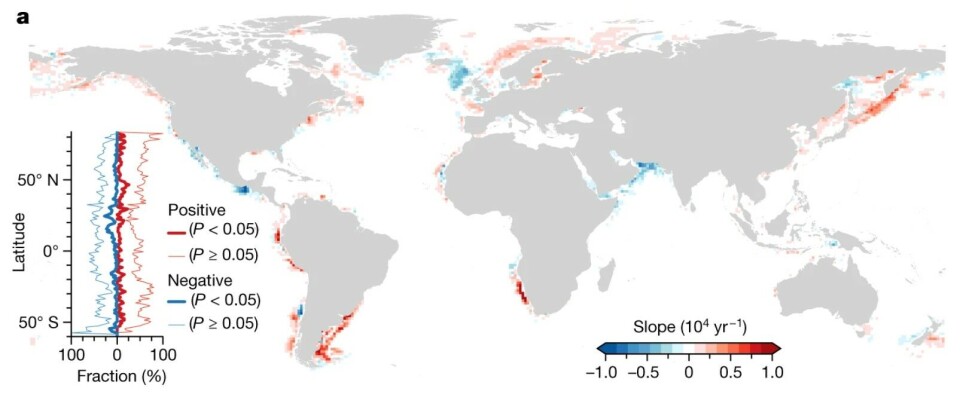
Large increase in harmful algal blooms between 2003 and 2020
Number of events rose by 59%, study of satellite images shows
Joint research by Chinese, American and Canadian scientists has found that harmful algal bloom (HAB) events have increased significantly over the period 2003-2020.
The results were achieved after an intensive analysis of 0.76 million global satellite images obtained from NASA during the period.
The researchers found that algal blooms occurred in 126 of the 153 coastal countries examined, which represented an increase of 13.2% in the spatial extent and 59.2% in the frequency of these events.
“The total area affected by blooms was 31.47 million km², equivalent to approximately 24.2% of the global land area and 8.6% of the global ocean area, with an average of 4.3 blooms per year for the past two decades,” the study authors explained.
HAB events in Europe (9.52 million km²) and North America (6.78 million km² ) covered the largest areas, while the highest frequencies of blooms were identified in Africa and South America with more than 6.3 average events per year, mainly influenced by blooms in the Atlantic Ocean. HABs weakened in tropical and subtropical areas of the Northern Hemisphere.
Temperature and enrichment
“The global average frequency of blooms showed a rate of increase of 59.2% during the period studied. Spatially, areas that showed significant increasing trends in bloom frequency were 77.6% larger than those with opposite trends,” the researchers stated.
Possible causes of the increase include an increase in sea surface temperature, changes in ocean circulation, and anthropogenic nutrient enrichment, among others, said the scientists.
“Globally, increasing trends in the area and frequency of HABs are evident. However, at the regional level, the trends were not uniform due to the combined effects of changes in climate, anthropogenic eutrophication, and the development of aquaculture. Our daily mapping of flowering events offers valuable reference information to understand the mechanisms underlying the formation, maintenance, and dissipation of HABs”, the researchers concluded.
Read the full study, “Coastal phytoplankton blooms expand and intensify in the 21st century,” in the journal Nature, here.






















































